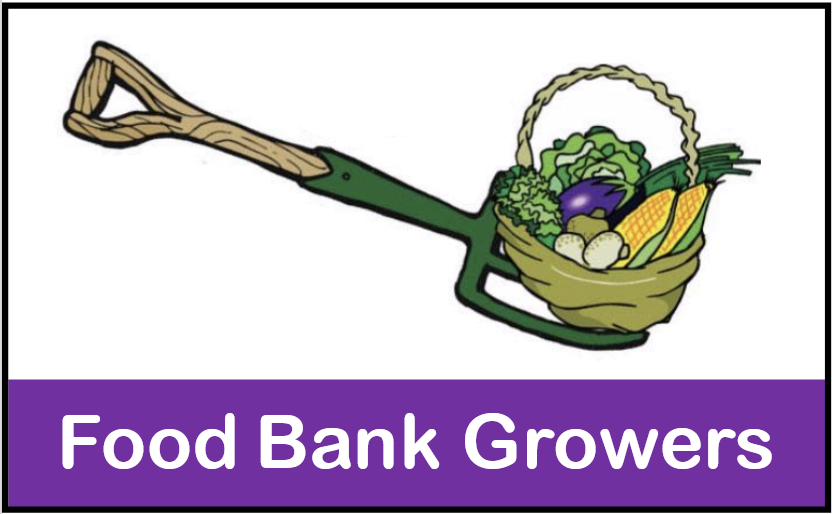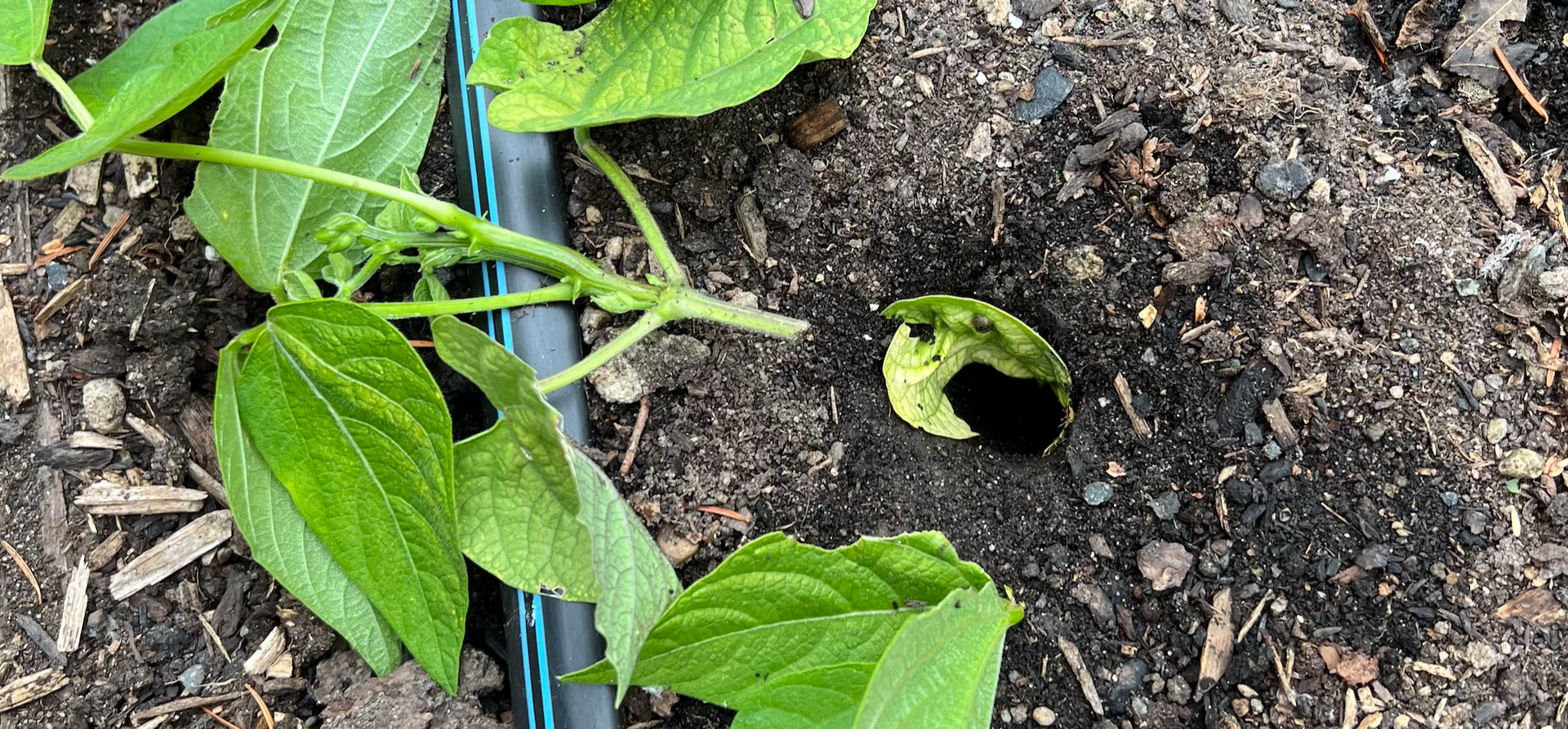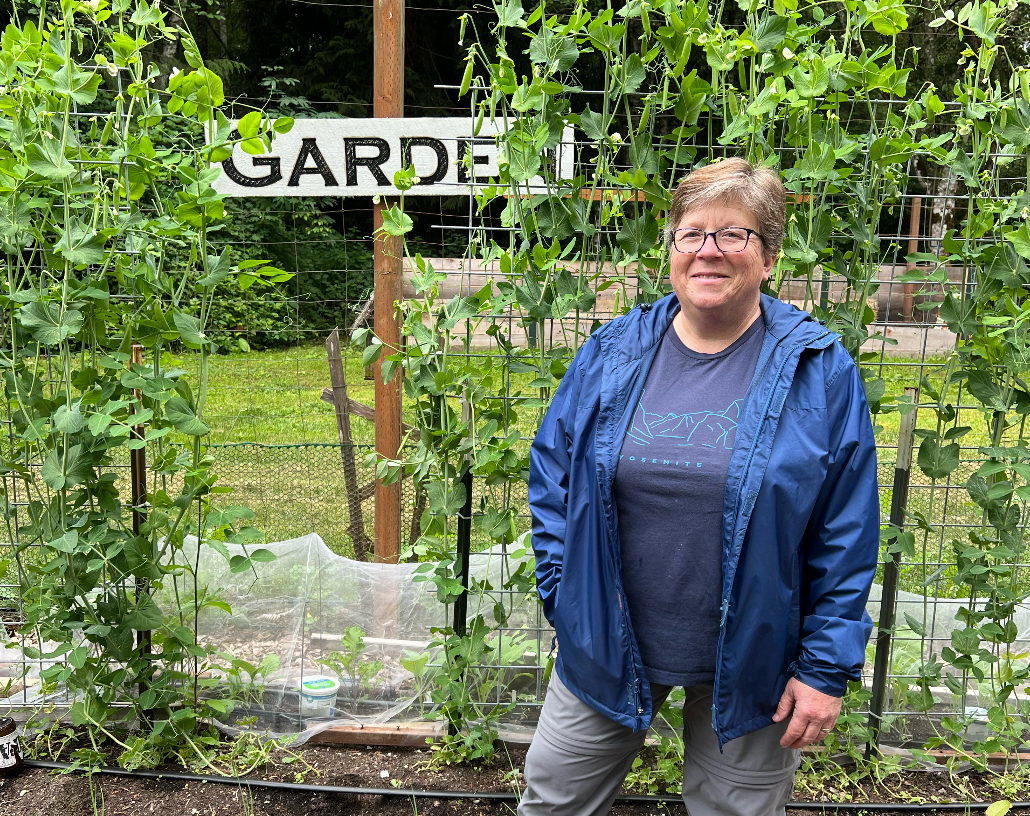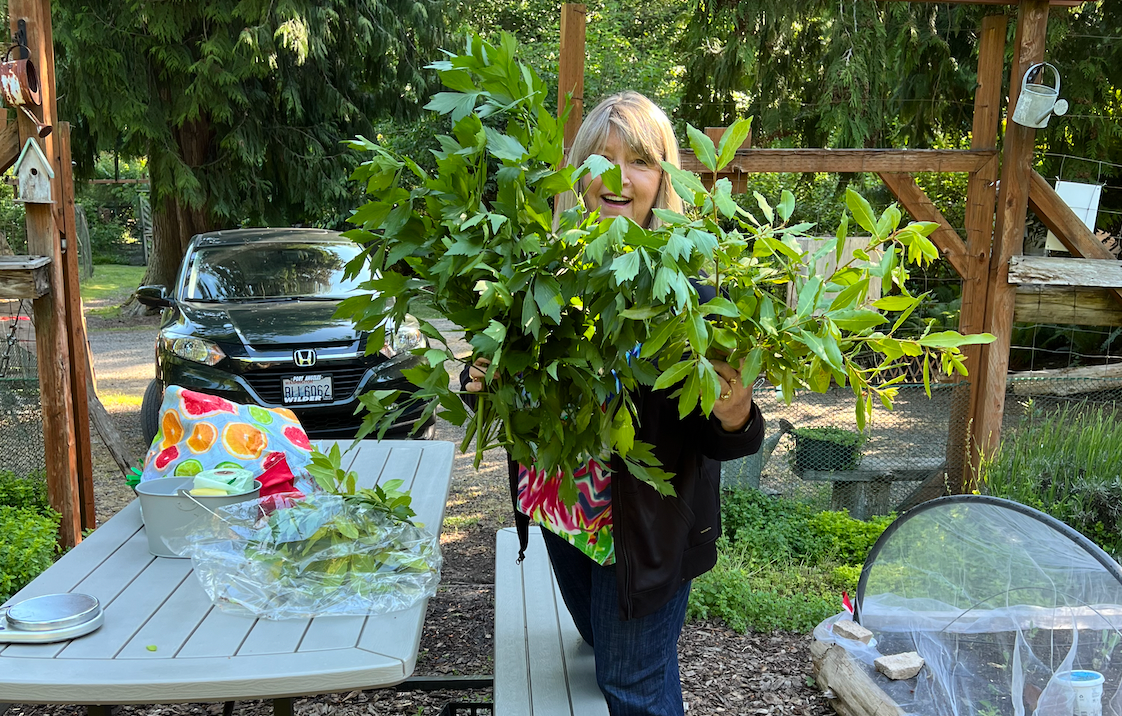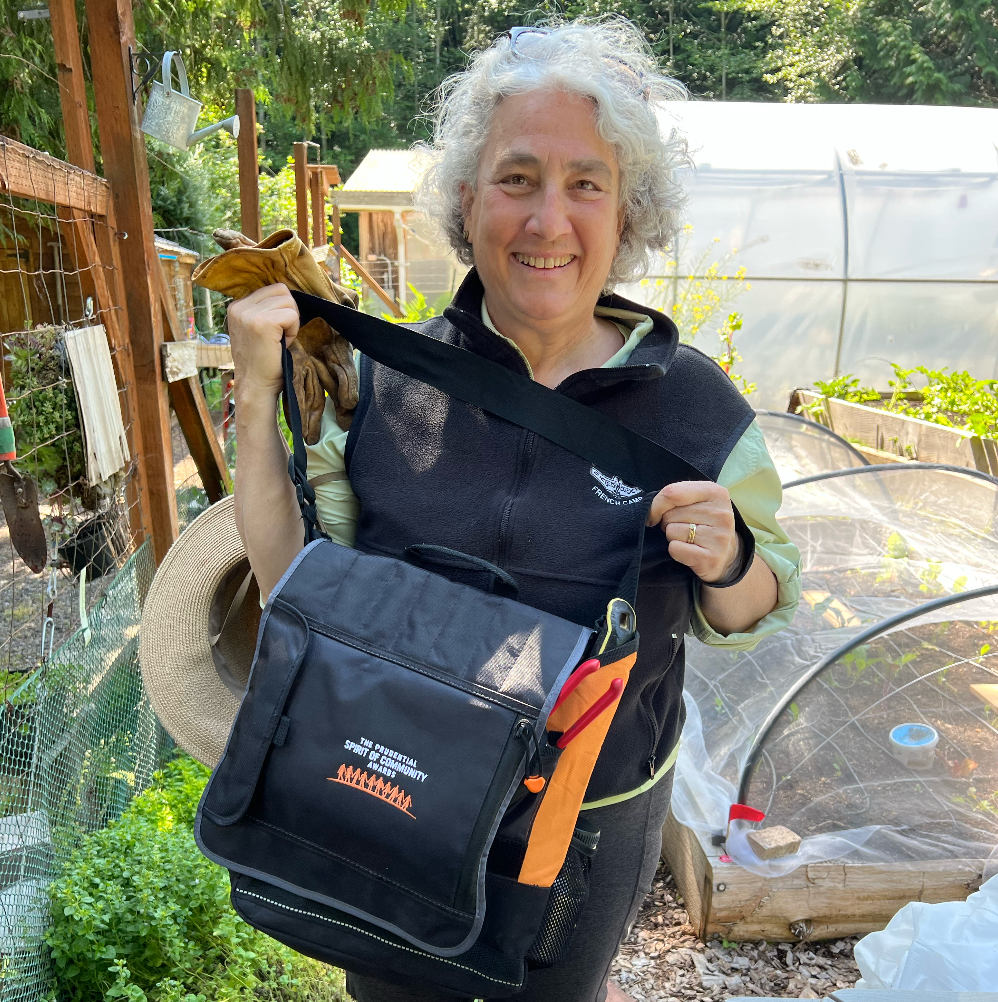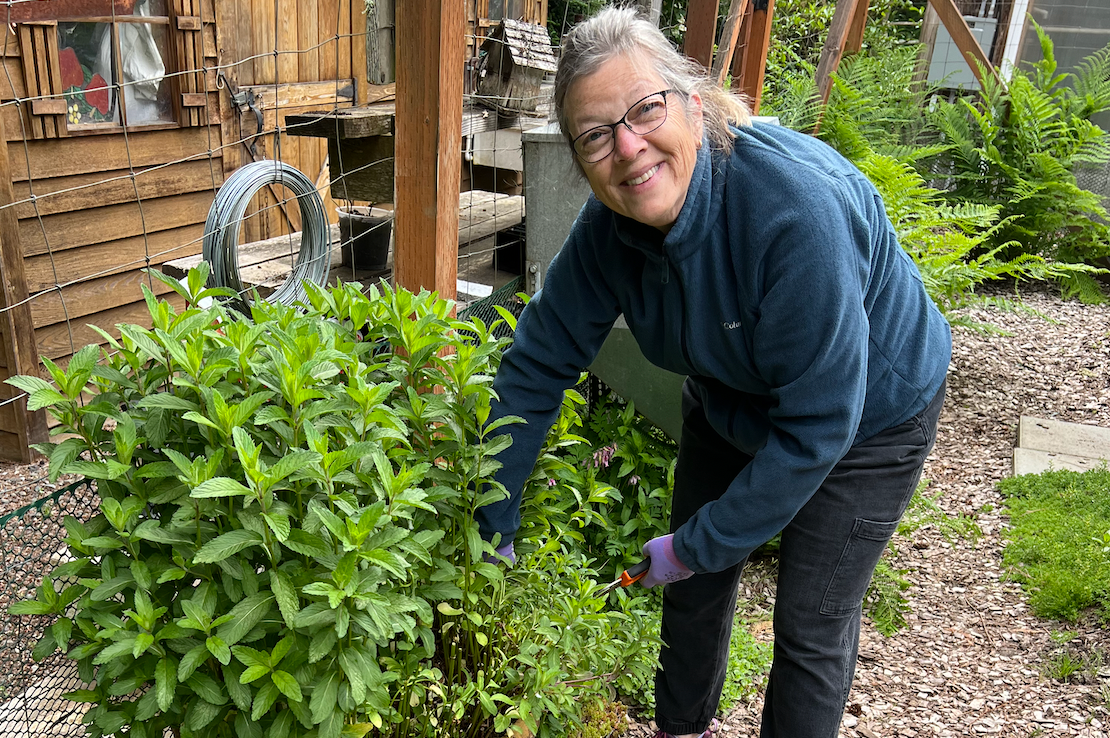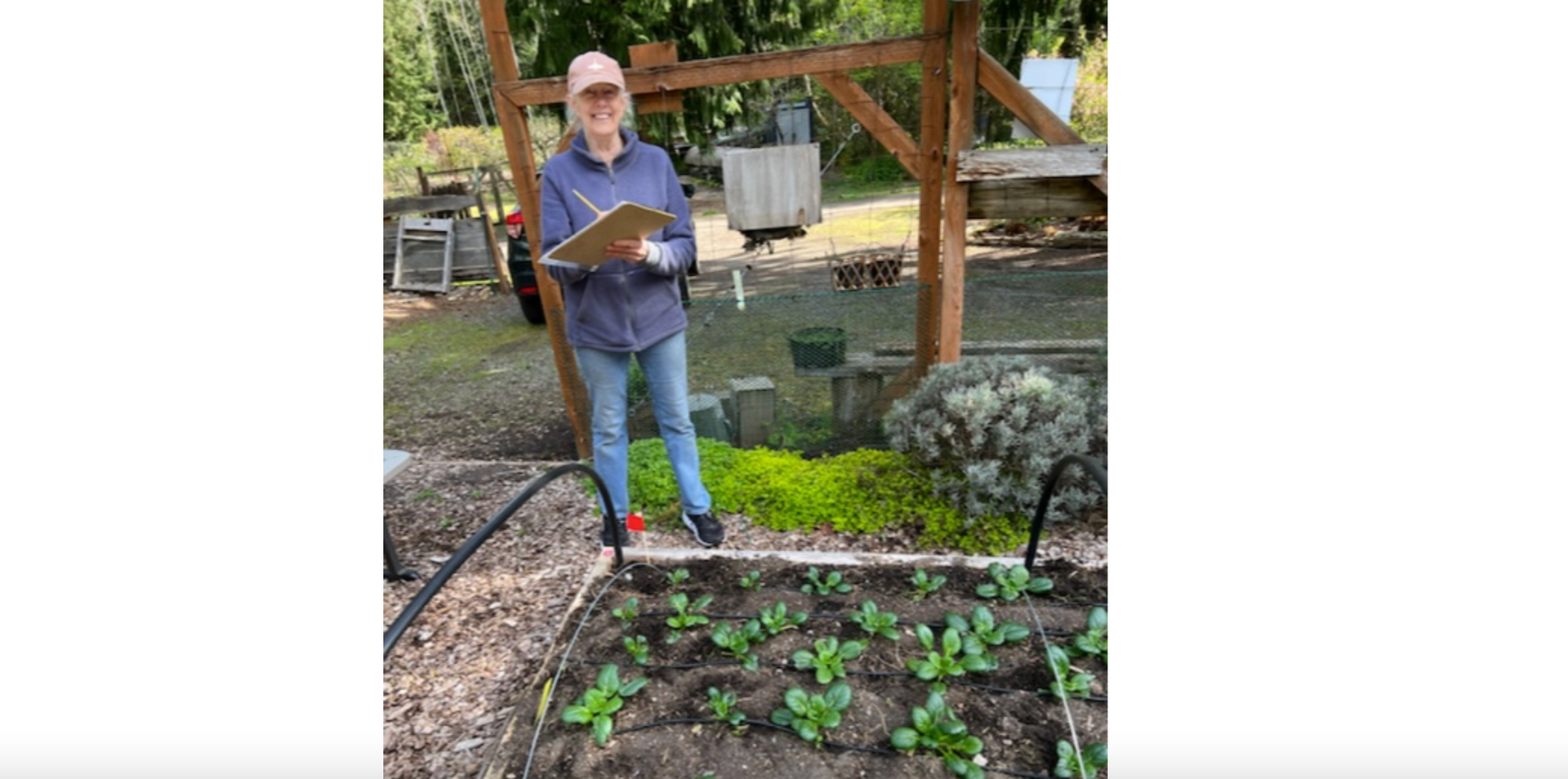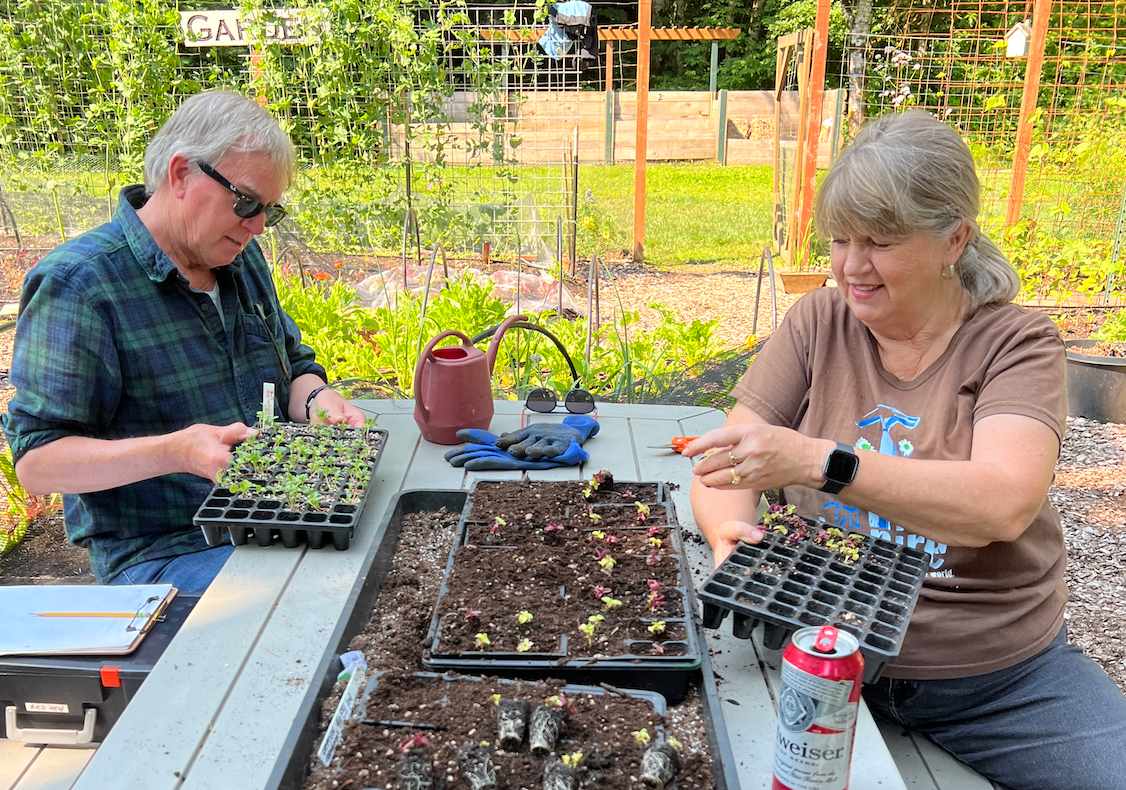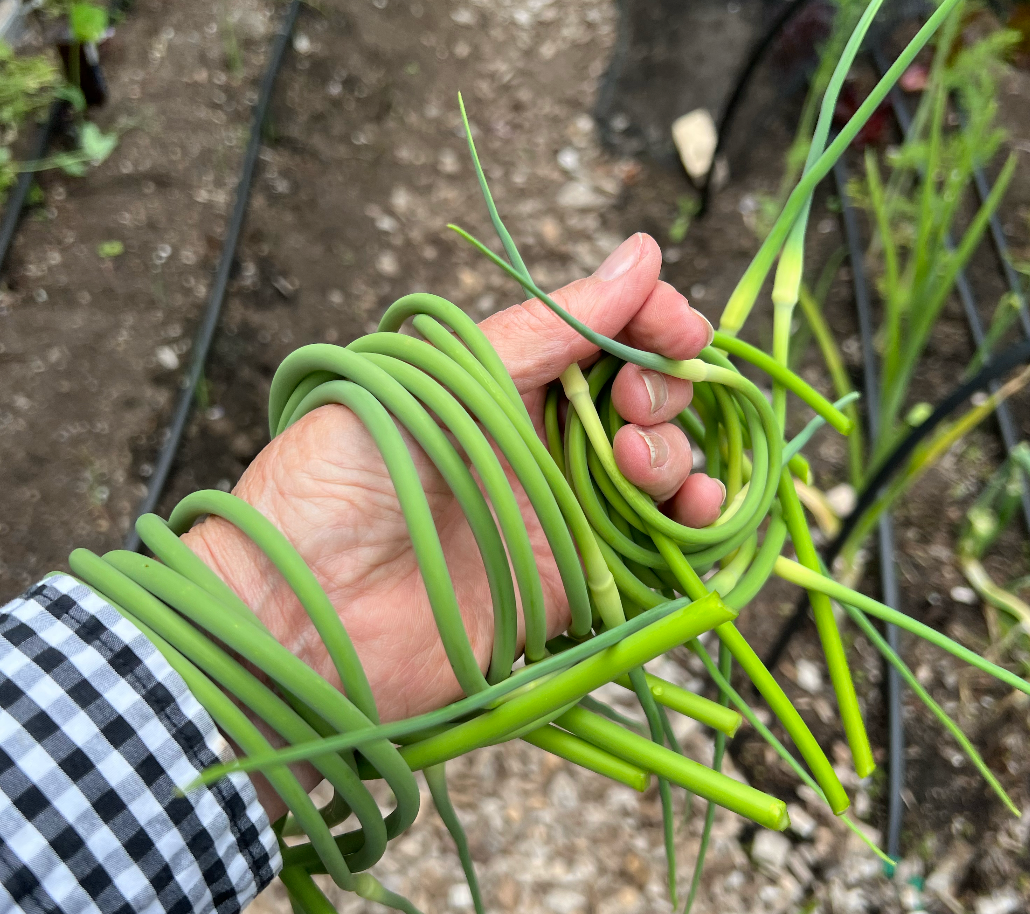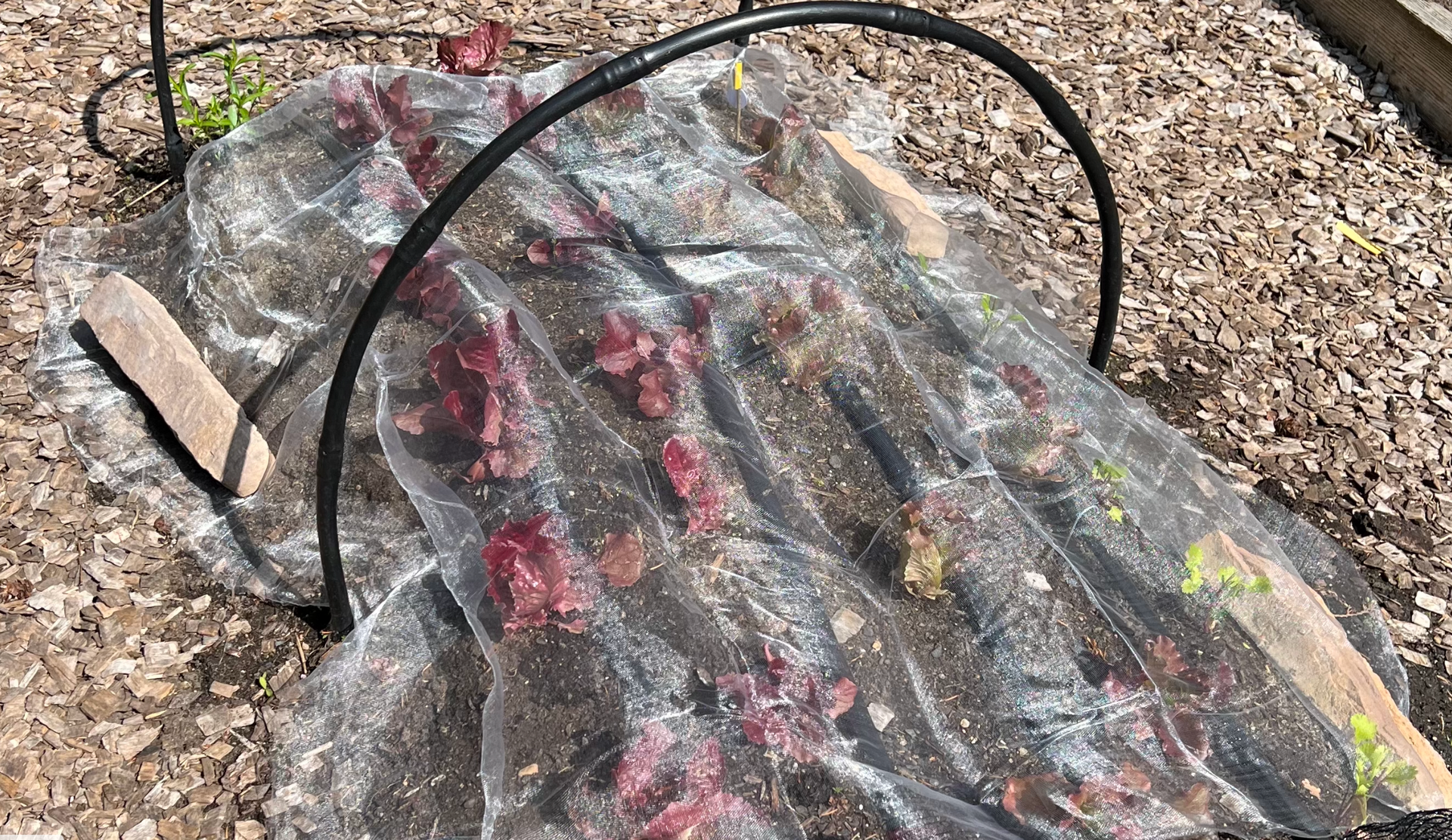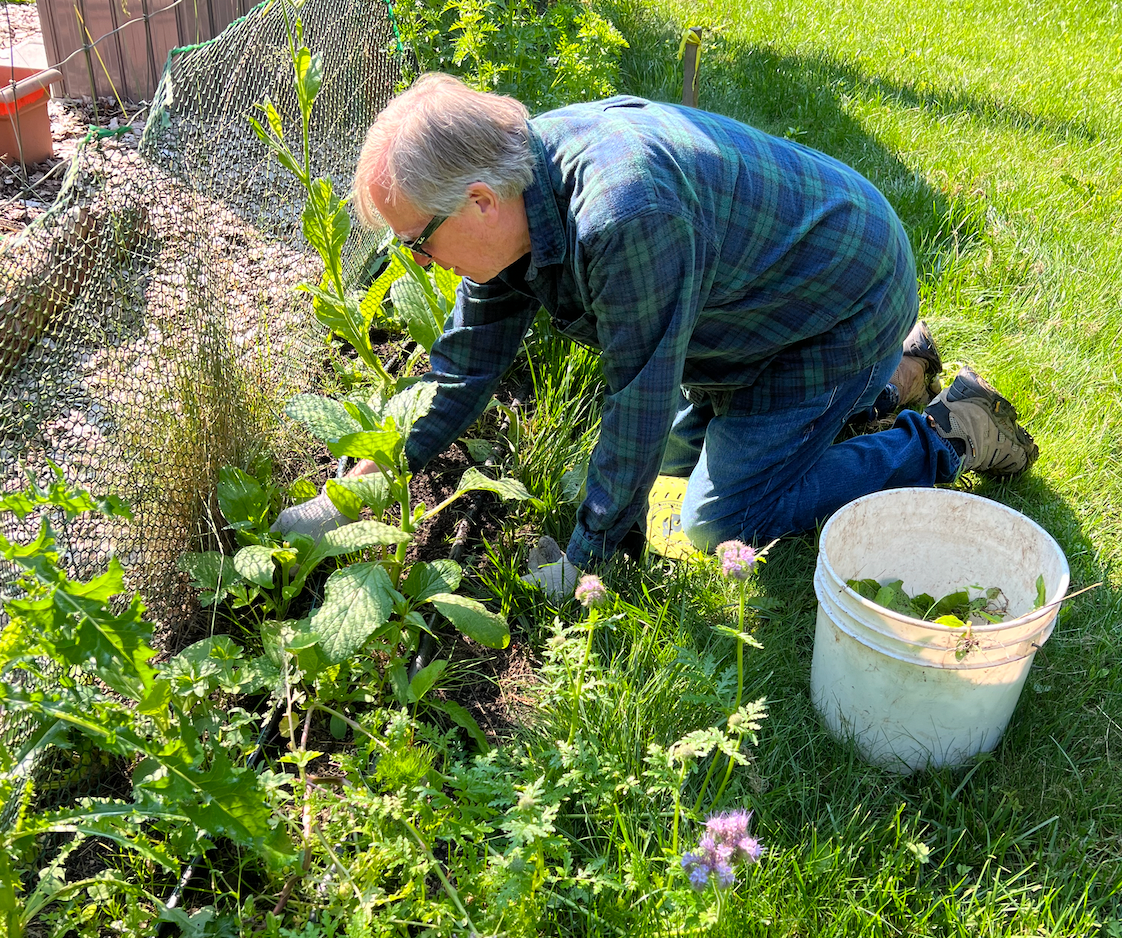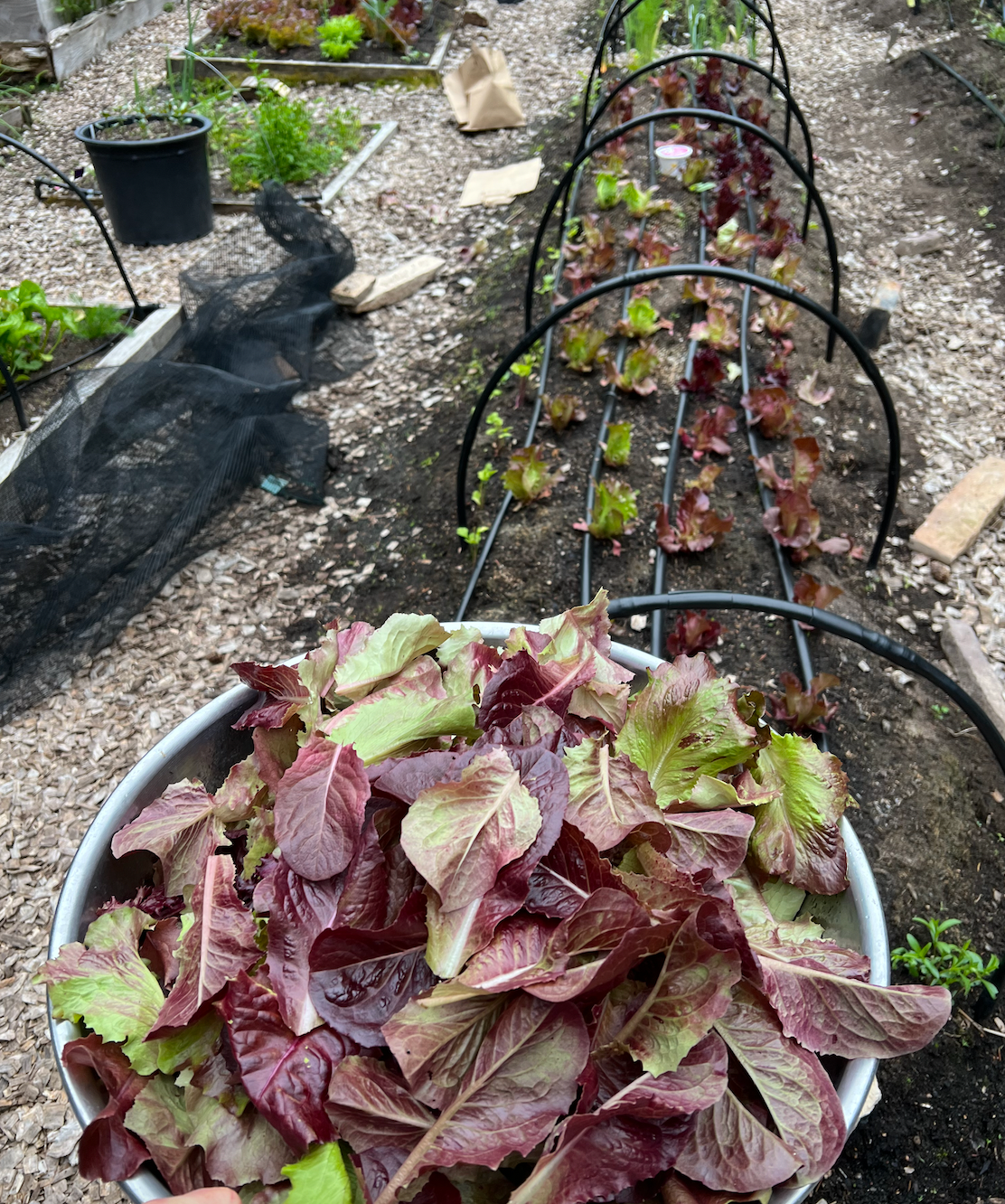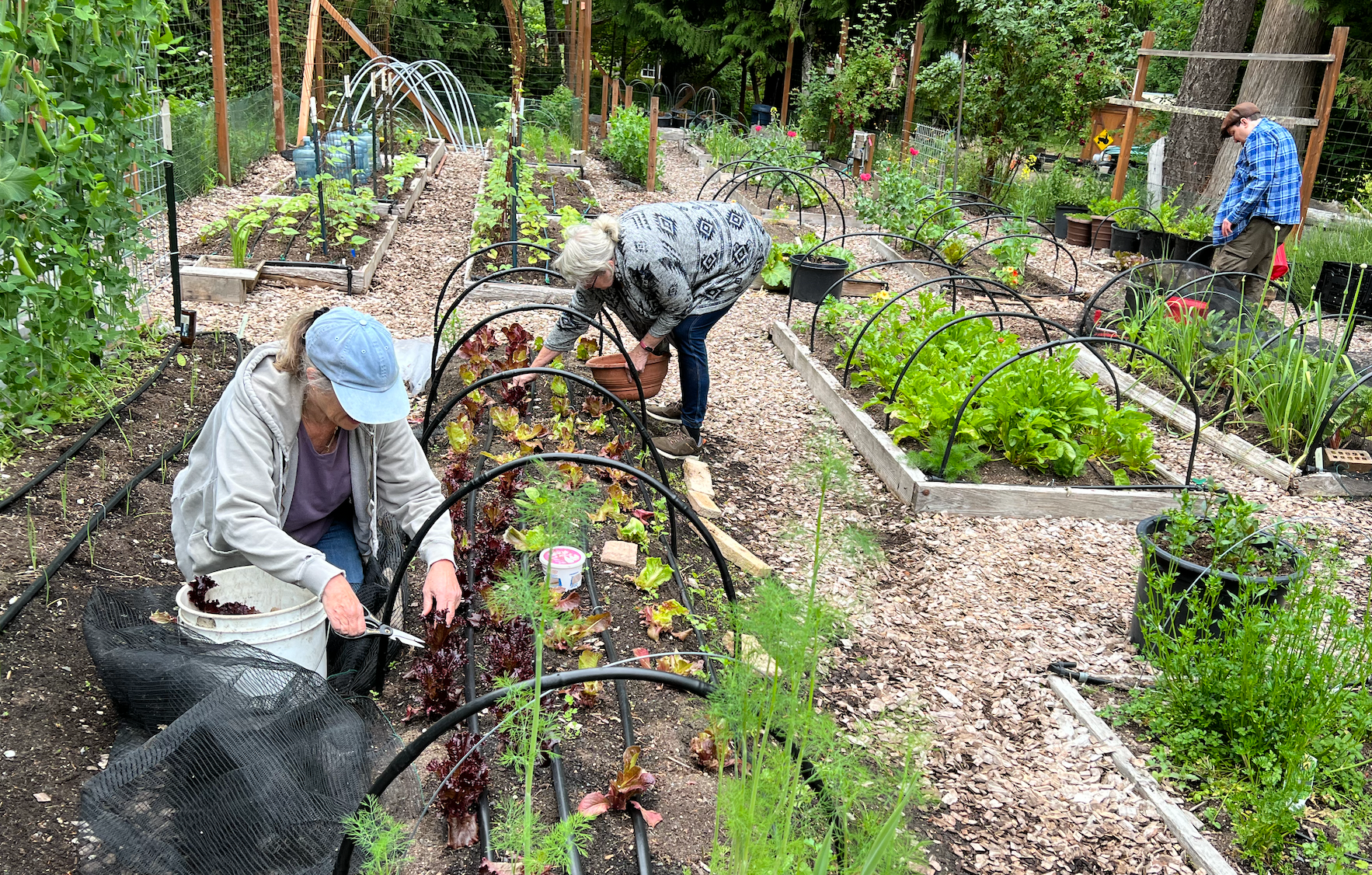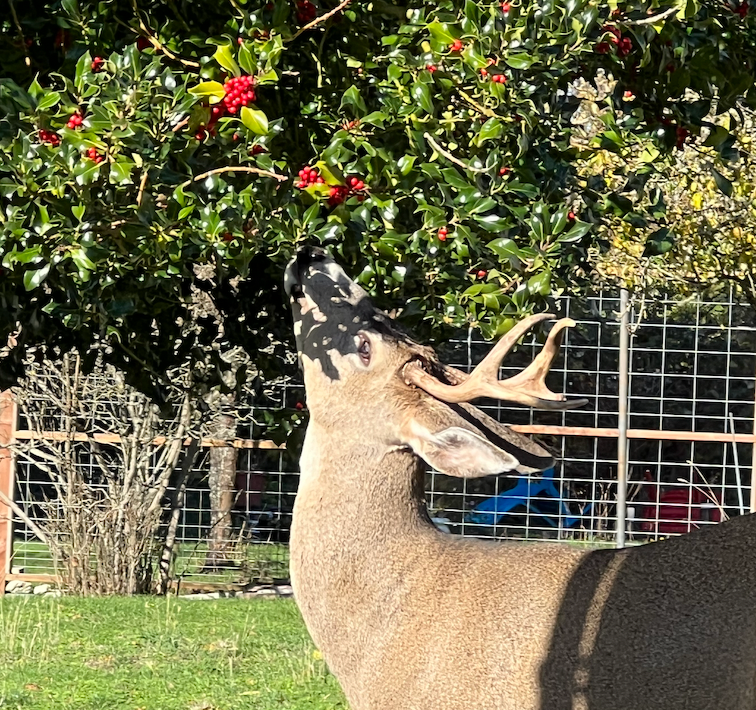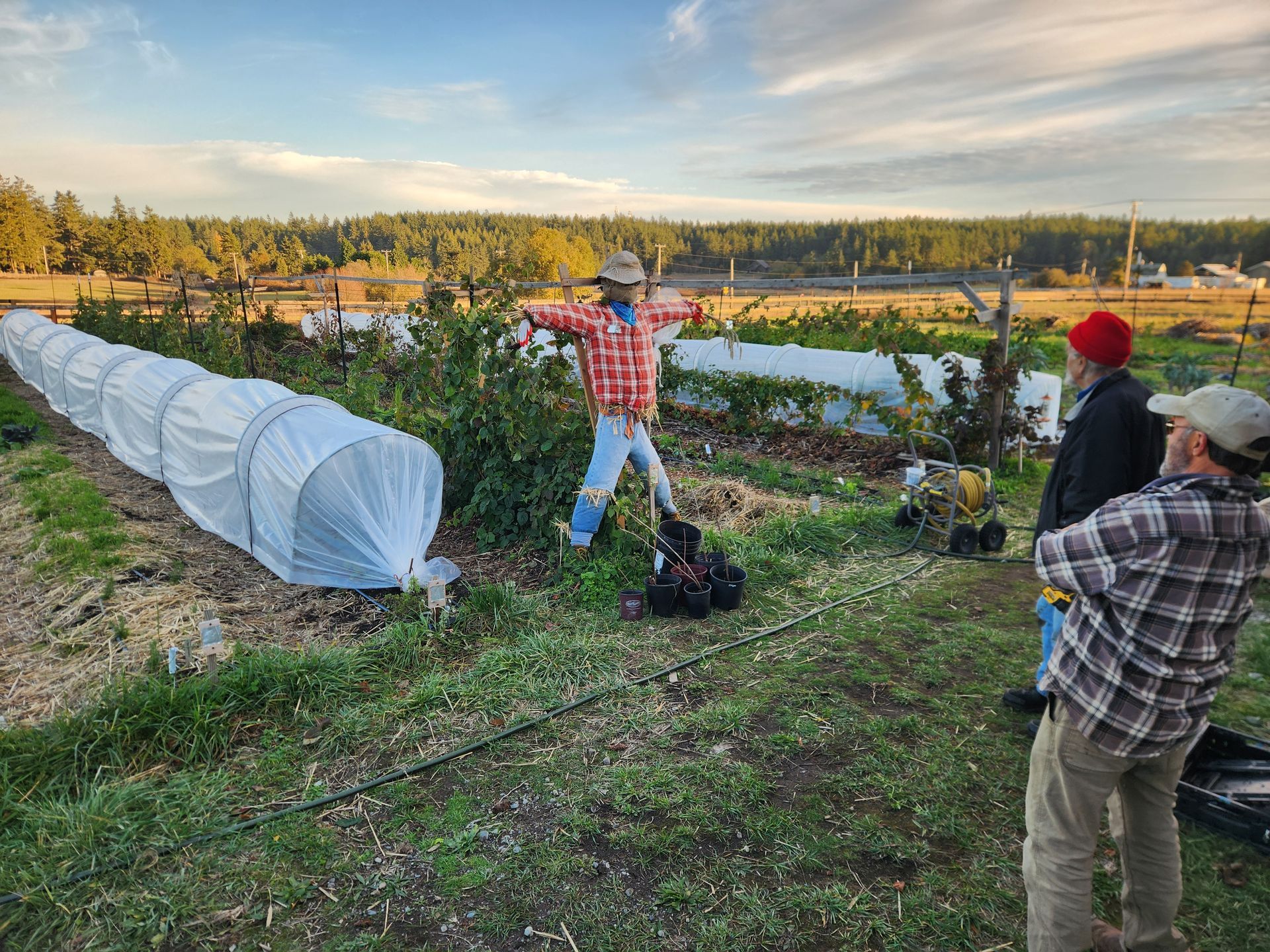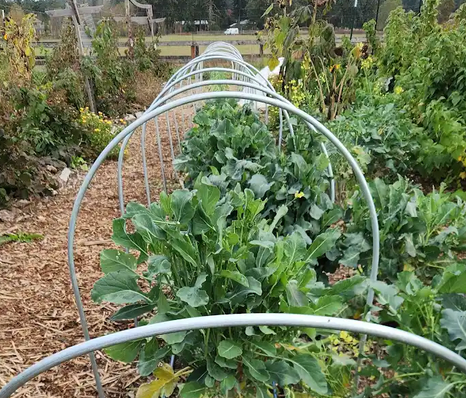Less Work. More Production
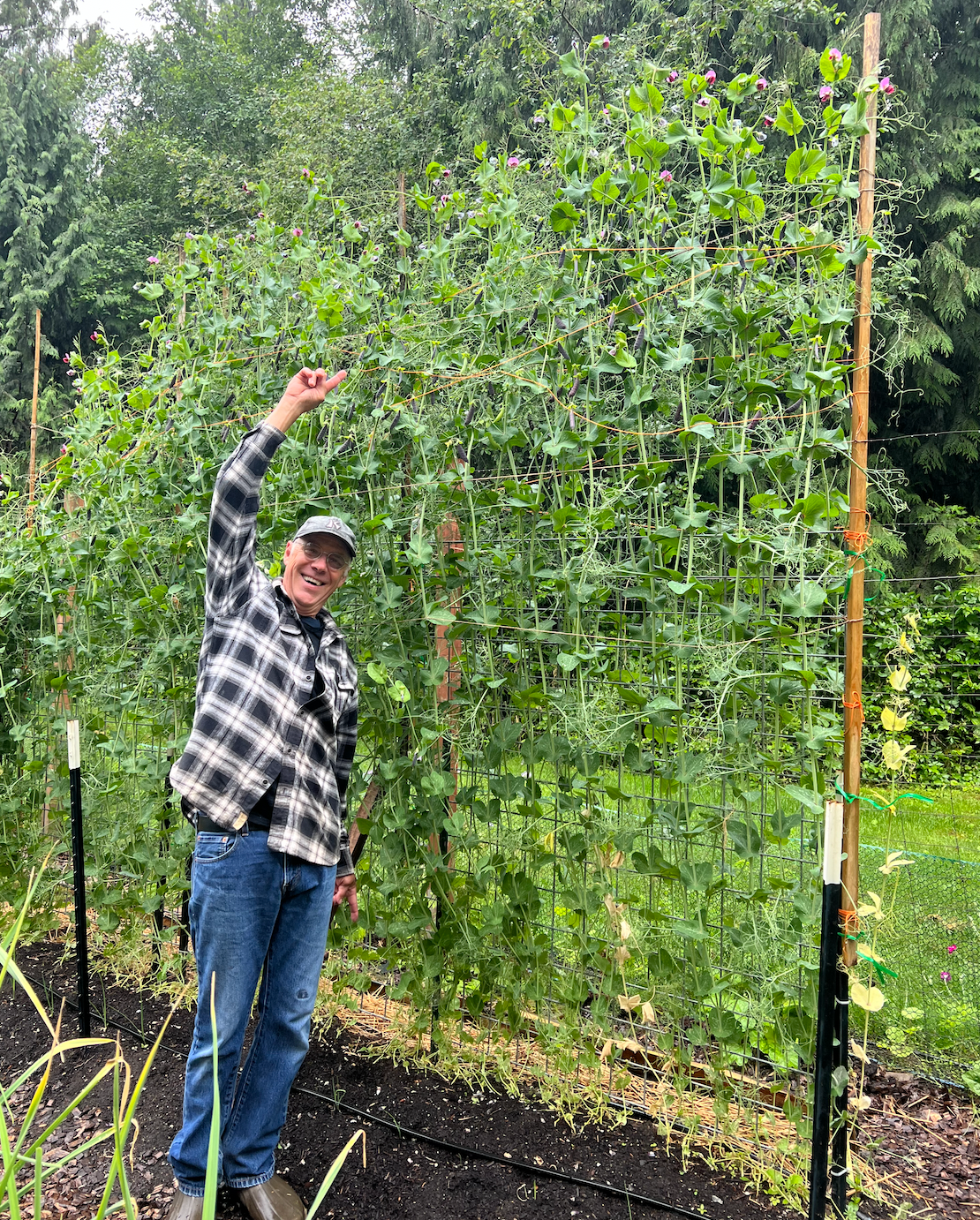
Until...
6-22-23
The Red Hen Garden has been through a lot of changes trying to find its sweet spot - the first year was about re-building 15-year old raised beds that were collapsing. Year two we doubled its size and added a compost bin and irrigation. In year three it was about trying lots of varieties to see what would grow best under its limited light situation.
(LEFT) Kevin with monster purple snow peas.
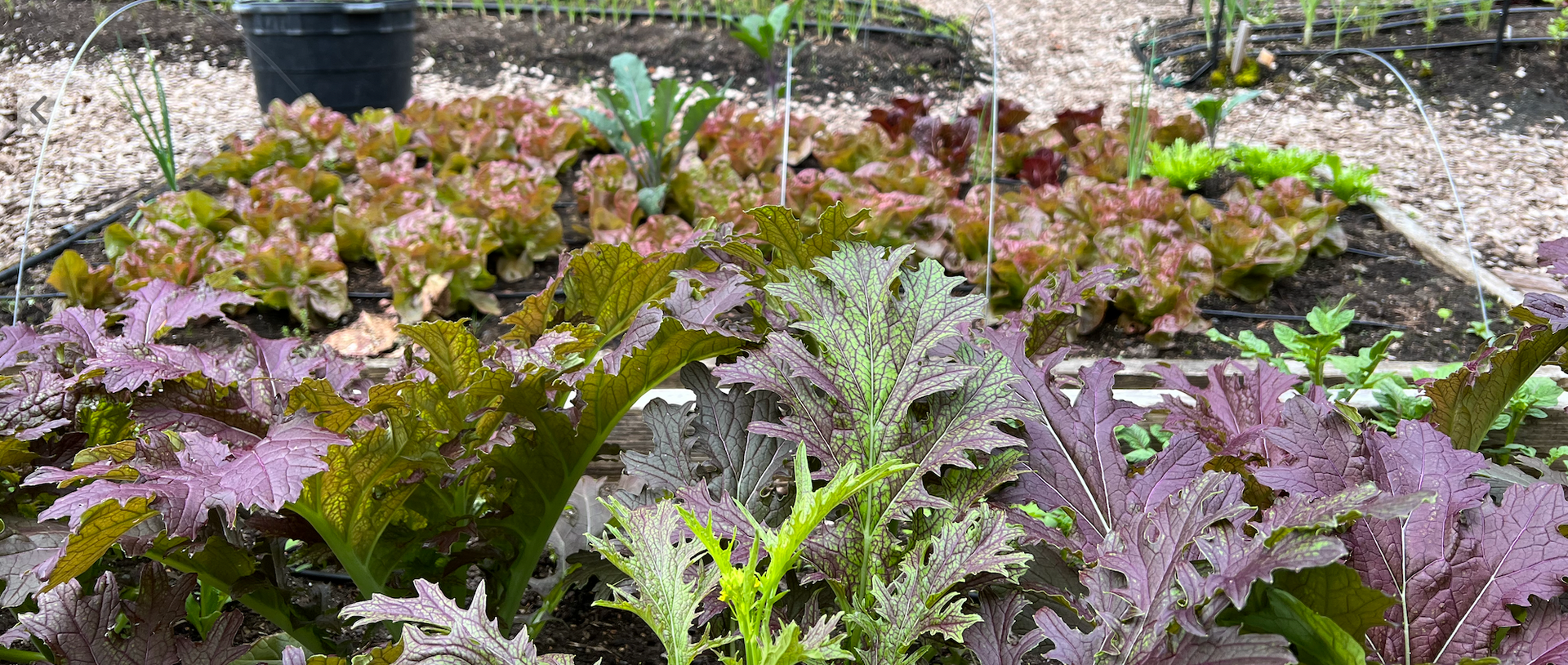
What worked?
#1 -- The volunteers!
Week after week they brought their expertise and backs to the job. The team of mostly Kala Point X-pats welcomed all garden newbies and oldsters cross-training each other in the art of earth and harvest. Thank you Red Hen class of '23 Pete, Hilary, Lindsay, Mary, Char, Christine, Kevin, Eve, Eric, Sharon and alumni garden starter - Lys.
Lots of new, wormy and delicious soil.
We learned that additives help, but good ol' guano in any form helps the most. A square inch of bio-activated soil has billions of micro-critters transporting nutrition to the roots since plants don’t have hands and mouths to do the work. No critters. No transport.
Plant shade tolerant plants.
Red Hen lives in a hole between Cedars and Douglas Fir, as the trees are growing, the amount of sun per day is shrinking on any section of the garden. Plants that can thrive in 3-4 hours of direct sun are required -- lettuce, brassicas, beans, peas, and herbs.
Use "row cover" netting.
Last year the cabbage butterflies and their crawling children had their way. This year we discovered reusable row cover weight netting it lets light and rain in, but keeps insects out.
Until…
VOLES!! They aren't stupid.
They've decided to set up a subterranean condo system under one deli bed of beans. Week-by-week, 8 inch high bean plants are being dragged below to feed the kids. A trap line is working, but the damage has been done. Always overplant and offset what the voles, crows, bugs eat. Try interplanting with onions as that seems to put off the flying pests.
SHADE
We were ecstatic to see the peas growing so fast and tall but then heading non-stop for the clouds. They were to top off at 6 feet and now "orchard picking ladders" are needed to harvest them. Why did this happen? We're guessing lack of sun is to blame. Just like seedlings get leggy if they don't have enough light, these plants are got looking for the light. The solution? Plant the shortest varieties for the next go around.
The Red Hen Motto lives on... Just Keep Planting!
